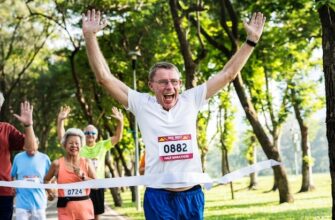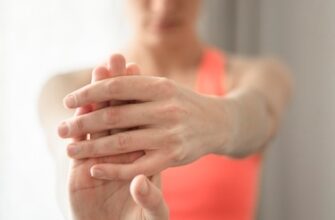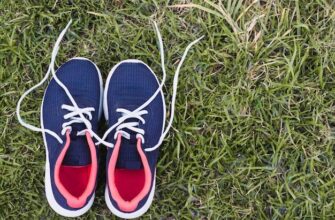Physical Therapy Exercises For Runner’s Knee
Introduction
Runner’s knee, also known as patellofemoral pain syndrome, is a common injury among runners. It is characterized by pain around the kneecap and can significantly impact a runner’s performance and overall well-being. While rest and pain management are important aspects of recovery, physical therapy exercises are crucial for strengthening the muscles around the knee and preventing future injuries. In this article, we will explore some effective physical therapy exercises specifically designed for runner’s knee.
1. Straight Leg Raises
One of the key aspects of recovering from runner’s knee is strengthening the quadriceps muscles. Straight leg raises are a great exercise for targeting these muscles. To perform this exercise:
– Lie flat on your back with one leg straight and extended, and the other leg bent with the foot flat on the ground.
– Engage your core muscles and lift the extended leg up towards the ceiling, keeping it straight.
– Hold for a few seconds and then slowly lower the leg back down.
– Perform 10-15 repetitions on each leg, for 2-3 sets.
2. Wall Squats
Wall squats are another effective exercise for strengthening the quadriceps muscles and improving knee stability. To perform this exercise:
– Stand with your back leaning against a wall, with your feet hip-width apart and a comfortable distance from the wall.
– Slowly slide down the wall, bending your knees and keeping your back straight, as if you are sitting on an invisible chair.
– Hold the squat position for 10-15 seconds before slowly sliding back up the wall.
– Repeat the exercise for 10-15 repetitions, for 2-3 sets.
3. Step-Ups
Step-ups are a functional exercise that mimics the movements involved in running. They help improve quadriceps strength and enhance overall lower limb stability. To perform this exercise:
– Stand facing a step or sturdy platform, with your feet hip-width apart.
– Step up onto the platform with one foot, pushing through your heel and engaging your quadriceps muscles.
– Bring your other foot up onto the platform, fully extending both legs.
– Step back down in a controlled manner, and repeat the exercise on the other leg.
– Aim for 10-15 repetitions on each leg, for 2-3 sets.
4. Clamshells
Clamshells are a great exercise for targeting the hip abductor muscles, which play a crucial role in stabilizing the knee during running. To perform this exercise:
– Lie on your side with your knees bent and your feet together.
– Keeping your feet together, open your top knee as far as you can without lifting your feet off the ground, and then slowly close it back down.
– Perform 10-15 repetitions on each side, for 2-3 sets.
5. Hamstring Curls
Strengthening the hamstring muscles is essential for runners with knee pain. Hamstring curls can help improve strength and stability in the back of the thigh. To perform this exercise:
– Stand with your feet hip-width apart, and hold onto a stable surface for support if needed.
– Bend one knee, lifting your heel toward your glutes, while keeping your thigh parallel to the ground.
– Slowly lower your foot back down and repeat the exercise on the other leg.
– Aim for 10-15 repetitions on each leg, for 2-3 sets.
6. Foam Rolling
Foam rolling is an excellent technique for releasing tension in the muscles and improving flexibility. It can be beneficial for runners with tight quadriceps, IT bands, and other muscles around the knee. To foam roll effectively:
– Position yourself on top of the foam roller, targeting the desired muscle group.
– Apply pressure to the roller, using your body weight to control the intensity.
– Slowly roll back and forth over the muscle, pausing at any trigger points or areas of tightness.
– Spend around 1 minute on each muscle group, rolling in different directions and angles.
7. Calf Raises
Strengthening the calf muscles can help improve lower limb stability and reduce the risk of knee pain. Calf raises are an effective exercise for targeting these muscles. To perform this exercise:
– Stand with your feet hip-width apart and the balls of your feet on the edge of a step or stable platform.
– Slowly raise your heels off the edge, lifting your body weight onto the balls of your feet.
– Hold for a few seconds at the top, and then lower your heels back down.
– Aim for 10-15 repetitions, for 2-3 sets.
8. Hip Bridges
Hip bridges are a great exercise for strengthening the gluteus maximus muscles and improving hip stability. They can also help alleviate knee pain by reducing stress on the knee joint. To perform this exercise:
– Lie flat on your back with your knees bent and your feet flat on the ground.
– Engage your core muscles and lift your hips off the ground, forming a straight line from your knees to your shoulders.
– Hold the bridge position for a few seconds before slowly lowering your hips back down.
– Repeat the exercise for 10-15 repetitions, for 2-3 sets.
9. Side Planks
Side planks are a popular exercise for targeting the oblique muscles, which play a role in stabilizing the hip and knee joints during running. To perform this exercise:
– Lie on your side, with your legs extended and your bottom forearm on the ground.
– Lift your hips off the ground, creating a straight line from your head to your feet.
– Hold the plank position for as long as you can, aiming for 30-60 seconds on each side.
– If needed, modify the exercise by bending your bottom knee and placing it on the ground for support.
10. Resistance Band Exercises
Resistance bands are a versatile tool for strength training and can be used to target various muscle groups involved in running. Some effective resistance band exercises for runner’s knee include:
– Band walks: Place a resistance band around your ankles, and take small steps sideways while maintaining tension on the band.
– Lateral leg raises: Attach a resistance band around your ankles and stand with your feet hip-width apart. Lift one leg out to the side, against the resistance of the band.
– Monster walks: Place a resistance band around your ankles, and take large diagonal steps forward while maintaining tension on the band.
Perform 10-15 repetitions of each exercise, for 2-3 sets.
Frequently Asked Questions (FAQs)
Q1: Can I continue running while recovering from runner’s knee?
A1: It is generally recommended to modify your running routine while recovering from runner’s knee. Avoid running on hard surfaces and consider reducing your mileage or incorporating cross-training activities.
Q2: How long does it take to recover from runner’s knee?
A2: The recovery time for runner’s knee varies depending on the severity of the injury and individual factors. It can range from a few weeks to several months. Consistency in performing physical therapy exercises and following professional advice can speed up the recovery process.
Q3: Can physical therapy exercises prevent runner’s knee?
A3: While physical therapy exercises cannot guarantee complete prevention of runner’s knee, they can significantly reduce the risk of developing the condition. Strengthening the muscles around the knee and improving overall lower limb stability can help protect the knee joint during running.
Q4: Can I do these exercises at home without supervision?
A4: These exercises can generally be performed at home without supervision. However, it is essential to learn the correct technique from a qualified physical therapist to ensure maximum benefit and minimize the risk of injury.
Q5: How often should I perform these exercises?
A5: It is recommended to perform these exercises 2-3 times per week, allowing at least one rest day between sessions. However, the frequency may vary depending on individual needs and the guidance of a physical therapist.
Q6: Should I stop exercising if I experience pain during the exercises?
A6: If you experience pain during the exercises, it is advisable to stop and consult with a healthcare professional or physical therapist. Pain can be a sign of improper technique or underlying issues that need further evaluation.
Q7: Can I combine these exercises with other forms of exercise?
A7: Yes, these exercises can be combined with other forms of exercise as long as they do not exacerbate your knee pain. Low-impact activities such as swimming or cycling can be beneficial for maintaining cardiovascular fitness while recovering from runner’s knee.
Q8: Can stretching exercises help with runner’s knee?
A8: Stretching exercises can be beneficial for runner’s knee, as they help improve flexibility and reduce muscle tension around the knee joint. Incorporate gentle stretching exercises before and after your physical therapy exercises.
Q9: When should I seek professional help for runner’s knee?
A9: It is advisable to seek professional help if your knee pain persists or worsens, or if it significantly affects your daily activities or running performance. A physical therapist or healthcare professional can provide a proper diagnosis and guide you through an individualized treatment plan.
Q10: Can wearing a knee brace help with runner’s knee?
A10: Wearing a knee brace can provide additional support and stability to the knee joint, particularly during activities that worsen the pain. However, it is recommended to consult with a healthcare professional before using a knee brace to ensure it is appropriate for your specific condition.
Conclusion
Physical therapy exercises play a vital role in the recovery and prevention of runner’s knee. By strengthening the muscles around the knee, improving lower limb stability, and addressing muscle imbalances, runners can reduce the risk of injury and enhance their overall performance. Incorporate these exercises into your training routine under the guidance of a physical therapist or healthcare professional, and remember to listen to your body and adjust the intensity as needed. With consistency and patience, you can overcome runner’s knee and get back on track to your running goals.















































